Canon 7D vs. Pentax K-5
Body Features / Build Quality
The K-5 inherits a body and control layout virtually identical to that of the K-7, which was nearly universally praised for its superior ergonomics. Its thoughtfully placed controls and superb build quality--a magnesium alloy shell over a steel frame--result in a camera that feels exceedingly solid in use. In particular, we enjoyed the way the K-5's grip is sculpted to fit the natural position of your fingers when shooting, making the camera feel like a natural extension of your hand. The 7D is no slouch on the ergonomic front either, though shooters migrating to Canon will find that the company's typical control layout differs quite a bit from that of Pentax and Nikon (more on that later). Once again the build quality is top-shelf, with a magnesium alloy body that lends the camera the feel of a professional tool. The 7D's grip is a bit more angular and less contoured than the K-5's, and we found that the raised, angular ridge in front of the Multi-Function button and just behind the shutter release irritated our index fingers a bit after heavy use.
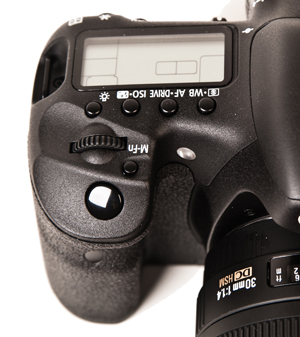
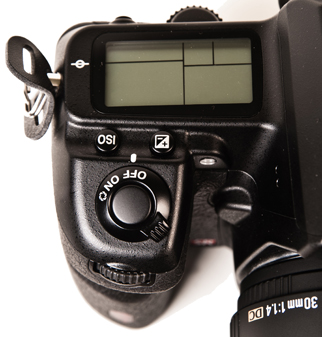
The K-5 is a seriously small dSLR, especially for a higher-end model. Cameras that are advertised as professional equipment tend to be bigger and bulkier, and in this sense are marketed in the same way as trucks or guns. Over the past few product cycles, Pentax has steadily chipped away at the idea that a camera has to be big to be pro-quality, and the K-5 is the latest evolution in that line of thought. Some may even argue that it's an evolutionary step too far, since the K-5 can feel a bit too small in large hands. Indeed, at times we found our pinky fingers curling under the bottom plate to get a solid grip. In this situation, the optional D-BG4 grip (the same one used on the K-7) is a natural solution, making the camera fit pretty much any hand like a dream. We'd go so far as to say the camera feels a bit naked without it.
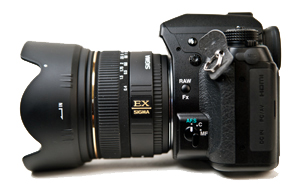
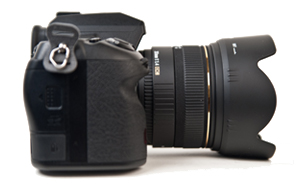
The 7D is bigger and heavier--significantly so. Weighing in at 860 grams, or 1.9 pounds, it's suprisingly even a little porkier than the full-frame 5D Mark II. (For comparison, the K-5 checks in at 740 grams, or 1.63 pounds.) It's taller and wider than the K-5 by the better part of an inch in both dimensions. These beefier specs may be a plus for some buyers; unlike the K-5, the 7D was large enough that all our fingers fit the grip without having to resort to any extra attachments. Furthermore, added body weight can also lead to better stabilization when using larger lenses, and since the Canon system doesn't have the selection of lightweight primes that Pentax is known for, the added bulk makes a certain kind of sense. However, the 7D is at a distinct disadvantage in street shooting, where imposing bulk is counterproductive.
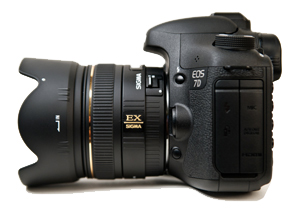
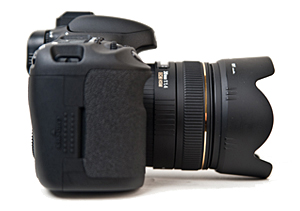
Pentax and Canon have pretty different sensibilities when it comes to control layouts--or at least as different as you can get while still producing a rectangular box you can screw lenses onto. This divergence is reflected both in the placement of buttons and dials on each camera, and in the resulting process of shooting with them. A number of small choices add up to a very different mindset when your eye is up to the viewfinder. These choices range from simple and mostly inconsequential (placement of the front e-dial), to frustrating (location of the power switch), to vaguely baffling (replacing the rear e-dial with a scroll wheel).
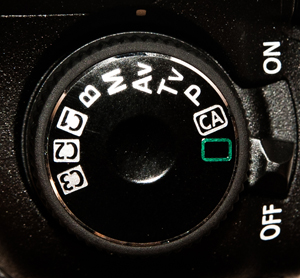
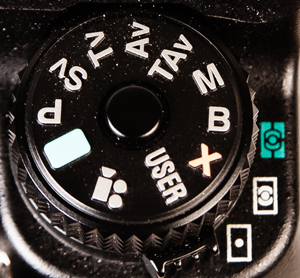
Where the K-5 places the front e-dial in front of the shutter release, the 7D puts it behind. This sounds like a tiny change, and in truth it is--the dial is equally far from the shutter release on each camera, and it's just a matter of muscle memory to remember which way you need to move your finger. Nevertheless, it's jarring the first time you reach for the dial and it's not there. A vastly more annoying design choice places the power switch on the left side of the camera, behind the shooting mode dial. More than once this placement caught us out during testing. The switch is simply positioned in such a way that it's awkward and unnatural to turn the camera on and off when it's raised to your eye, and in high-pressure shooting situations this can be a real drag. By the time you lower it, turn it on with your left hand, and bring it back to your eye to recompose, the moment will lost. Pentax's solution--power switch encircling shutter release--is simpler and more logical, giving you a better chance to capture an important shot.
The most obvious difference comes with the rear controls. Where the K-5 has both front and rear e-dials augmented by a four-way navigational pad, the 7D replaces the rear dial with a large scroll wheel accompanied by a small joystick. This takes some getting used to from a Pentaxian perspective, because so much of efficient shooting comes from muscle memory. Once you acclimate to the setup, however, you realize that there's little difference in functionality (which makes us wonder why Canon chose it rather than following the herd). The K-5's rear e-dial can't navigate the camera's menus on its own, and neither can the 7D's wheel. The 7D's joystick can move in the same four directions as the K-5's traditional four-way pad, as well as diagonally, and can be pressed down to emulate the function of the K-5's central OK button. It can also be used to select the AF focus point, just like the K-5's four-way pad. But what the 7D doesn't replicate is the dual-purpose nature of the four-way pad's buttons. The self-timer, white balance, color mode, and flash settings that those buttons access are shifted to separate buttons positioned in front of the top LCD, which is a distinctly less convenient place for them to be. This doubling is part of what allows the K-5 to be so compact while still providing quick access to the most important shooting functions.
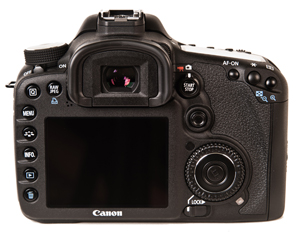
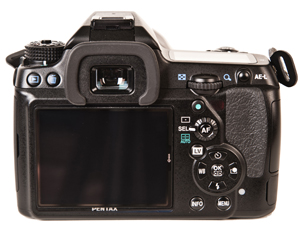
Virtually all of the K-5's vital shooting controls are clustered on the right-hand side of the camera, promoting single-handed operation. While the 7D has a string of buttons running down the left side of the LCD, thankfully these largely pertain to image review and menu settings--controls you won't be trying to get at by feel mid-shot. On the right-hand side of the rear of the camera is a mass of buttons that spill over onto the top LCD area.
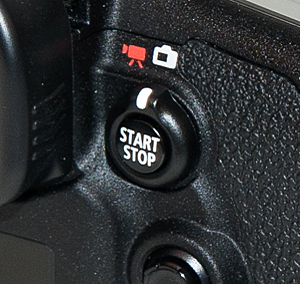
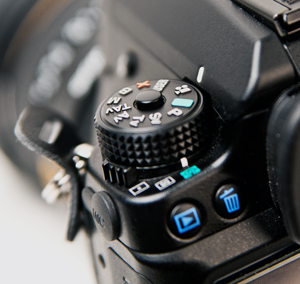
Unlike the K-5, the 7D wisely incorporates a dedicated switch to toggle between still shooting and video. When shooting stills, the Start/Stop button at the center of the switch takes the camera in and out of live view; when shooting video it begins and ends recording. Both cameras have AF and AE-Lock buttons, but where the K-5 uses a manual switch for AF point mode selection, the 7D has a shoulder-mounted button that brings up a menu on the rear screen. Similarly, the AF drive option is chosen using a button-activated menu on the 7D, where a mechanical switch handles it on the Pentax. Annoyingly, these graphical menus are only visible when the 7D's rear info screen is in use. When it's not, some of these operations require the user to press two buttons at once while looking at the top LCD.
This sounds like a silly complaint--more ways to achieve the same result must be a good thing, right?--until you realize that often these two buttons are very small and placed very close together. This means that you either need both hands on the same side of the camera body, or you need to perfect some elite finger gymnastics to pull it off with one hand. It's a seriously frustrating setup if you're trying to move quickly.
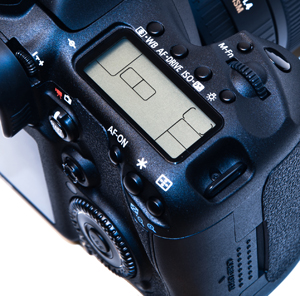
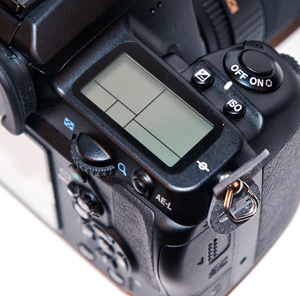
In general, it's fair to say that Pentax has elected to take a simplified approach to their control system with the K-5--it's as minimalist as the body's measurements. Meanwhile, the 7D's design makes it clear that Canon wants to maximize the number of routes available to complete every possible user interaction. While this can be a good thing--it allows for extreme customization in each user's shooting style--it's a little daunting at first and can be clumsier than is absolutely necessary. We found the K-5 to be much easier to manipulate while shooting in the moment--mostly because we could easily reach nearly all of the vital controls while the camera was held to our eye. It's a very subjective thing, but to us the K-5 feels first and foremost like an organic photographic tool, while the 7D can at times feel more clinical.


